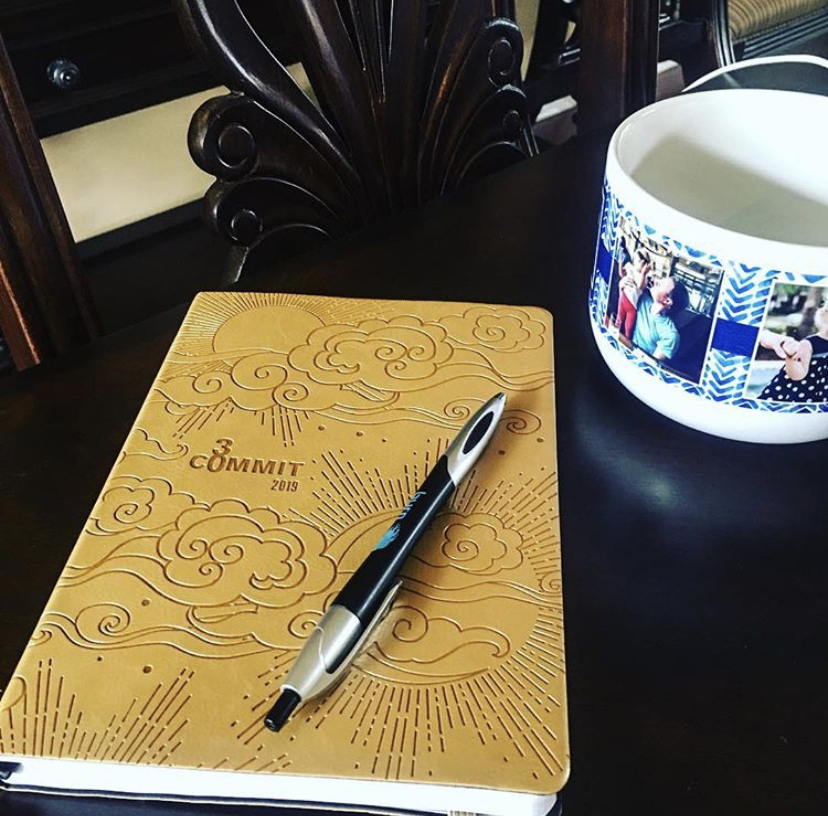Last September I was poking around on the interweb for something to motivate me to get back on track with my nutrition. I stumbled across Whole 30. I had heard about Whole 30 a long time ago. Seems like it was around the same time a Whole Foods opened in my neighborhood. In fact, they were selling the book in the store. Back then I was too cheap to buy the book, but had looked it up online and my jaw must have dropped to the ground when I read all the restrictions. Back then I didn’t fully absorb the concept of an elimination diet and quite honestly was not ready for that drastic of a change in my lifestyle. True lifestyle changes take years to occur, not weeks or months. Fast forward quite a few years, and my eating habits were dramatically better. I slowly but surely started making the connection between food and body. But first, I went through a phase of yo-yo dieting where I would count every calorie and often looked to low calorie “diet” foods that had tons of artificial ingredients including artificial sweeteners and I would struggle with constant sugar cravings. Eventually, I made the connection that fake sugar was just as bad as real sugar without knowing any of the science behind it.
Even though I knew both the fake and real sugars were bad for me, that wasn’t enough for me to stop consuming them. I always try to strike the 80/20 balance of eating healthy, but allowing myself to indulge occasionally. My biggest issue was fighting my hunger, eating larger portions then my body really needed, and constantly snacking.
Whole 30 can be intimidating, but I was intent on giving it my best effort. What most people may not know is Whole 30 is an Elimination diet and is meant to help detox your body of all the foods that may potentially be causing inflammation (including sugar) in your body and allowing your body time to heal before you slowly and methodically reintroduce one potentially inflammatory food at a time to truly know what foods you should be avoiding to feel your best and help your body thrive. It’s not an overly restrictive quick fix weight loss diet, although many may experience weight loss as a result of your body being able to absorb all the nutrients from whole foods with no disruption from processed and/or sugary foods. While on Whole 30, to stay in line with the true intent, you are not supposed to count calories, track macros, or weigh yourself. It is meant to be a lifestyle reset where you can eat intuitively based on listening to the cues your body gives you to indicate when you are truly hungry and not just bored, lonely, or stressed. By eating only whole foods, true hunger is more easily identifiable because you are not inundating your body with artificial ingredients that are added to foods with the intent of making you want more. Don’t be fooled when packaged foods claim they are healthy for you. If the ingredient list is longer than your “To-Do” list and you can’t pronounce half of the ingredients, it’s not healthy for you.
When you are on Whole 30, you are given guidelines on portion sizes for 3 meals a day and advised not to snack in between meals. Those meals are to consist of half your plate filled with veggies, a palm sized portion of protein, a thumb sized portion of fat, and occasionally starches veggies and/or fruits. No sugars of any kind including cane, artificial sweeteners, and natural sweeteners like Stevia. However, dates are an acceptable source of sugar due to the fiber content contained in the fruit. Whole 30 also excludes dairy, legumes, gluten, grains, or anything processed (which includes protein powder).
When I started Whole 30 my overall diet wasn’t too far off from the list of acceptable foods, however I was starting to rely on adding Stevia to a lot of things like protein shakes and coffee and I was snacking A LOT through out the day. My main goal with starting Whole 30 was to cut out the snacking and reign in my “Sugar Dragon”. The biggest thing for me to give up was my protein shakes. I used protein shakes as a way to satisfy my sweet tooth as well as an easy way to help me reach my macro goals. I honestly wasn’t sure if I was going to be able to make it a full 30 days without my little protein shake treat at the end of the day. It also made me nervous that I probably wasn’t going to be able to hit my protein goals from a macro perspective. I made out ok the first week. As with any change, as long as your motivated, the first week or so usually isn’t too bad if the changes are not too dramatic. For some, that first week can be absolute HELL though. Based on the feedback I’ve gotten, there’s definitely a strong correlation between the degree of change and the degree of difficulty. For example, someone going from a diet primarily consisting of processed foods and virtually no vegetables will usually have a VERY difficult first week which will likely include strong withdrawl symptoms such as headache, nausea, fatigue, etc. I was fortunate to not have any of those symptoms. Fast forward through the next few weeks, I was finding that incorporating healthy fats like avocado, coconut oil, and olive oil really helped with my sugar cravings and snacking. It has been so ingrained in us to go low fat to maintain or lose weight, but fat is GOOD for you in moderation! My biggest takeaway from going through Whole 30 is that I realized Stevia has the potential to awaken the “Sugar Dragon” in me, which then leads into me snacking more. For a few months after finishing Whole 30, I stopped doing protein shakes all together, but as I got back into tracking my macros, I again found it was difficult to hit my protein goals. My compromise was to use unflavored protein. That worked for a few months, and of course, I got bored pretty quick with that. Now, I am at a point where I believe I have found a balance where I get the majority of my protein from whole food sources, but I do have a shake in the morning post workout to maximize my muscle growth. If I feel like the “Sugar Dragon” is starting to take hold of me, I will do a mini-Whole 30 for a few days until I am confident my sugar cravings are under control again.
Here are a few pointers if you decide you are interested in trying Whole 30:
- Buy the Whole 30 book! It’s such a valuable resource, not just while you are doing Whole 30, but post Whole 30 as well. There are so many easy recipes that I still use to this day and it just helps you gain a deeper understanding as to the “why”. It’s easily one of the best investments I’ve ever made.
- Determine what you want to get out of the experience. If you think your biggest issue is your sugar consumption/cravings. Focus on that, and don’t sweat the small stuff on all the other guidelines. You can always do Whole 30 more than once, so don’t worry about being perfect. Do the best you can while staying focused on one or two of your main goals.
- Ease into Day 1. If you know cutting out the creamer in your coffee will be one of the toughest things for you to cut out, pick your Whole 30 start date and at least one week before slowly decrease the amount of creamer in your coffee each day to ease into cutting it off cold turkey.
- Be prepared. Put together a game plan ahead of time with your meals, and look for ways to flip ingredients into your next meal. For example, if you decide you’re going to roast a chicken for dinner, use the left over meat for a salad the next day, and if you’re feeling frisky, use the bones to make a bone broth which you can flip into a soup.
- Expect that your first trip to the grocery store will take longer than usual and you may end up spending a little more than usual to stock up. If you can, go without the kiddos that first time, as you will be spending more time reading ingredients, and you won’t want to be distracted. You will likely spend a little more than usual because you may need to stock up on things like coconut milk, coconut oil, or other oils, herbs, or spices that will last you a while, but will require a little extra spend up front.
- Keep it simple. Until you feel more versed in your meal preparation, do yourself a favor and keep it simple. As you build your confidence start incorporating more intricate meals to keep it fresh and interesting.
- Look for inspiration on social media. Pinterest and Instagram are great resources for recipe ideas. Find a community of like minded people by joining a Facebook group as well to keep yourself accountable and motivated.
- Don’t freak out if you slip up. Technically, if you “fall off the wagon”, you are supposed to start all over again at Day 1, but this is where I say it’s really up to you. My thought is, if your focus is to get control over your sugar intake, then if you slip up by having some bread one night, don’t think it has ruined the whole experience for you. You can always do Whole 30 again with your focus being on gluten, or use that slip up as a “mini test” and really observe how you feel the next few days.
- Don’t overlook the benefits of the Reintroduction Period. This is where the rubber meets the road. You put in the work by cleansing your body for 30 days so that it is a clean canvas for you to test and see which foods cause you inflammation. It is well worth the extra week or so to obtain that wealth of individualized bio-insight.
- Keep in mind that it’s all about progress, not perfection. Lifestyles don’t change overnight, nor do they change in 30 days. Whole 30 will be a nice hefty push in the right direction, but you will likely have some bumps in the road post Whole 30, and that’s ok. As long as your doing better than yesterday, you’re doing all the right things.
- Have fun with it! Use Whole 30 as an opportunity to try some new foods you may not have tried before. You may find a new favorite that replaces some of those not so healthy foods you used to indulge in.
I hope sharing my experience has helped. If you decide to take the leap, let me know what you think. I love hearing your thoughts. Make it happen!



